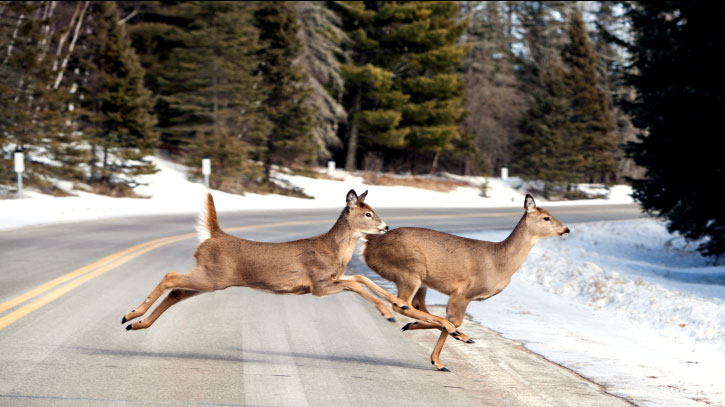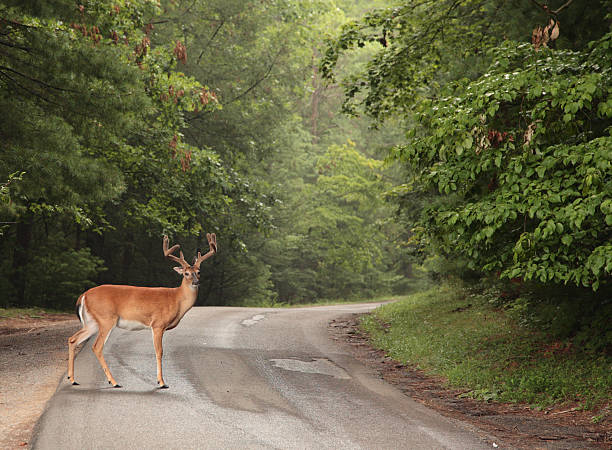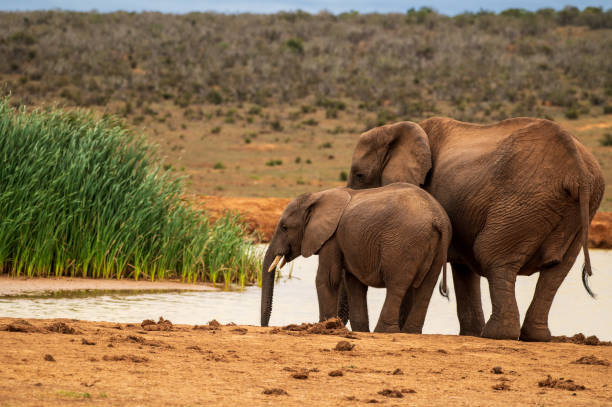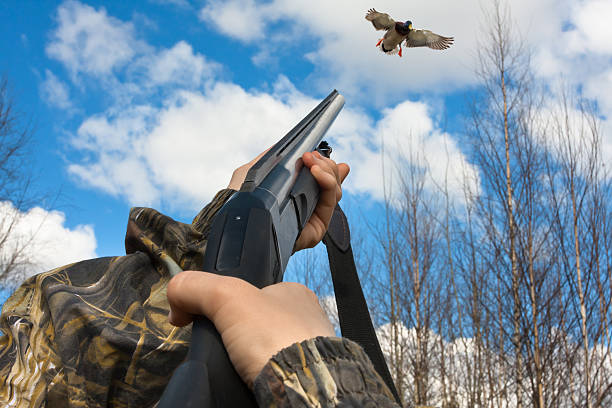If you’ve ever found yourself sitting in a deer stand wondering if you picked the right time, you’re not alone! My buddy Mitch has been hunting for years and needs to work on timing.
Last season, he was set up in the perfect spot but left before a massive 10-point buck walked by! This guide aims to help hunters avoid experiences like Mitch’s by providing insights into peak deer activity periods.
Knowing when deer will likely be on the move can prevent wasted, unproductive hunts. Their activity levels fluctuate throughout the day and depend on various factors. However, there are some general guidelines hunters can follow. The most important things to consider are food sources, weather patterns, and deer mating cycles.
This comprehensive guide will walk through the science behind deer behavior so you can maximize your time in the field.
What Times of Day Are Deer Most Active?
The first thing every deer hunter wonders is what times of the day the deer will be moving around. As prey animals, deer generally avoid being outdoors during bright daylight hours. This leaves the transitional periods around dawn and dusk as prime movement times. However, there are some variations throughout the seasons.
Dawn and Dusk
Most of the year, deer will concentrate their activity right before sunrise and after sunset. Their eyes are designed to see best in low light, so this is when they feel most secure moving around.
- Generally, activity picks up about 45-60 minutes before sunrise. Once first light hits, deer will still be up on their feet, feeding for a while before bedding down.
- In the evening, deer get up from their beds around 45-60 minutes before sunset to resume feeding under the cover of dusk. They prefer to get started while there is still some light out.
- During the rut in the fall, all bets are off. Bucks will be chasing does around the clock, so you may see movement anytime.
If you had to pick two hours, the prime times would be early morning (dawn) and late evening (dusk). Sit tight during daylight, and you should catch deer on the move.
Mid-Day Lulls
You can usually expect a lull in deer activity during the middle of the day when the sun is high overhead. Intense sunlight makes deer feel exposed, and they will bed down to chew their cud and rest.
- Plan to take a break from the stand mid-day between 10am – 2pm when deer movement is lowest.
- In areas with lots of hunting pressure, deer may go nocturnal and only come out after dark. So, legal shooting light ends may be your best bet.
- During the peak rut in November, bucks are so riled up they may stay on their feet even mid-day chasing does. But otherwise, expect things to be slow until late afternoon.
Simply put – mornings and evenings are best; take a siesta when the sun is blazing!
Prime Times by Season
The peak hours of deer activity can also shift depending on the time of year. Here is a quick look at how the prime times change seasonally:
- Spring – Morning and late afternoon. The bucks are still moving usually before the antlers shed.
- Summer – More nocturnal movement to avoid heat. It’s best early morning or at night in legal shooting hours.
- Fall – All day during rut peak! Otherwise, early morning and late evening.
- Winter – Mid-day is the warmest time during cold weather, so deer may move then.
As a general rule, target mornings and evenings. But keep an eye out for shifts with the weather and seasons.
How Does Weather Impact Deer Movement?

Mother nature ultimately decides when deer feel comfortable moving around. Cold fronts, heat waves, rain, snow, and wind can all impact daily activity patterns. Pay attention to the weather forecast before heading to your stand.
Temperature
Temperature is one of the most significant factors controlling deer movement daily.
- Cold Weather – Deer will be more active during daylight hours with cold temperatures below freezing. Mid-day when temps peak is often best as deer want to feed heavily before it gets too hard at night.
- Warm Weather – When temps exceed 70°, deer shift to being more nocturnal to avoid heat stress. Please plan to be in the stand early or late evening when it cools.
- Fronts and Rain – Barometric pressure changes from weather fronts make deer restless. Rain also gets them on their feet, feeding earlier. Be ready for good daytime movement.
So, deer generally move most during shooting hours on colder days. In warm weather, go early or late when active.
Wind
Watch the wind forecast before your hunt. Deer rely heavily on scent and drastically change their behavior if they smell something they don’t like, such as a human.
- Light Wind – Best for hunting. It disperses scents, so deer can’t smell you easily at a distance. They will keep to normal movement.
- Heavy Wind – Deer bed down and don’t move much in windy conditions. It’s too hard for them to sense danger.
Ideally, you want a steady, light breeze between 5-15 mph for an active deer hunt. Strong winds shut them down.
Moon Phases
Many hunters swear deer move more during certain moon phases, but science doesn’t entirely back this up. However, some patterns are worth watching:
- New Moon – Deer may leave cover to feed more in total darkness around a new moon. But rut boosts movement regardless of the moon.
- Full Moon – Thought to reduce deer movement at night since open fields are brightly lit. May see more activity near dawn/dusk. But effects are minimal.
Overall, the moon has little impact on daytime deer movement compared to the weather. Don’t worry too much about the moon phase when timing your hunt.
When Is the Rut and How Does It Affect Activity?
The infamous rut is prime time for bagging that trophy buck. Bucks let their guard down and move recklessly while chasing does. Rut timing depends on your region, so look it up specifically, but generally:
Pre-Rut
- Bucks begin seeking does, increased movement toward the end of October.
Peak Breeding
- All day and night chasing during the first weeks of November.
Post-Rut
- Activity slows but continues through December as some do come back into estrus.
You can throw standard activity patterns out the window during the rut’s peak. Bucks prowl around the clock, making all times good for hunting! Just don’t expect normal behavior – set up close to doe bedding or feeding areas, and you’ll find rutting bucks.
What Food Sources Attract Deer and When?
Deer are feeding machines, with stomachs built to constantly digest plant matter. Their activity revolves around searching for food, so locating food sources is critical to finding deer. The best hunting times can depend on what deer are eating.
Food Types
Deer eat different foods depending on the season. Here are the top attractants:
- Spring – New green growth like clover, forbs, agricultural crops like wheat, soybeans, and young corn.
- Summer – Crops like soybeans, corn, fruit from trees and shrubs like apples, acorns once they start falling, alfalfa. Favor protein-rich foods.
- Fall – Acorns and nuts like hickory nuts are preferred as they fatten up for winter. Hit harvested fields of corn, wheat, and soybeans.
- Winter – Browse on dormant shrubs like stands of autumn olive, hay, and winter wheat. Rely on stored fat.
Find the best food sources on your hunting land and set up nearby. Crops, oak trees, and forest openings offer reliable hot spots.
Feeding Times
Deer typically feeds most heavily in the early morning before bedding down and again in the late afternoon until after dark. But they will grab quick meals throughout the day.
- Morning – Right before sunrise, when deer are most active, feed heavily on nearby corn/soybean fields, acorns, forbs, and shrubs. Intense feeding follows.
- Mid-Day – Lower feeding activity during bedding time. Focus on browsing dormant shrubs and leftover waste grain in harvested fields on cold winter days when deer remain active.
- Afternoon – Increased feeding from late afternoon until after dark on agricultural crops, oak trees, forbs, and fruit trees.
Make sure your stand or blind overlooks known feeding areas. Then, hunt mornings and evenings when feeding peaks.
How Can Moon Phases Influence Deer?
Many hunters swear deer move more during certain moon phases, but science doesn’t entirely back this up. However, some patterns are worth watching:
- New Moon – Deer may leave cover to feed more in total darkness around a new moon. But rut boosts movement regardless of the moon.
- Full Moon – Thought to reduce deer movement at night since open fields are brightly lit. May see more activity near dawn/dusk. But effects are minimal.
Overall, the moon has little impact on daytime deer movement compared to the weather. Don’t worry too much about the moon phase when timing your hunt.
What are the Best Times of Year to Hunt Deer?
You can find moderate success hunting deer throughout the seasons in most areas. But certain parts of the year are better than others. Here is an overview of the prime seasons:
Fall
Fall is prime time for most deer hunters for two big reasons:
- Cooler Weather – Daytime movement peaks with cold fronts moving through. Deer are already in feeding mode to fatten up for winter. Cooler temps also help preserve meat.
- The Rut – Testosterone-charged bucks are on the move, seeking does continuously during the breeding season. Activity peaks for several weeks in November in most regions.
Anytime from mid-October through December, you’ll find active deer during daylight hours in the fall. Take advantage of the rut if you can!
Late Winter
Many states have deer seasons reopened for late winter hunting. Though not as popular, late season can also be productive:
- Deer are coming off limited food availability in deep winter, so they readily emerge to feed in fields.
- Temps begin warming enough to get deer active again in daylight.
- The bucks have dropped antlers, making them less wary.
Hunt field edges in the late afternoon where deer come out to browse. The hungry deer of early spring are vulnerable.
Conclusion
As you can see, there are a lot of factors impacting when deer are most active during legal hunting hours. Your strategy may change by the season or even day-to-day with the weather. However, the most consistent times to find deer on their feet are early morning and late evening, around dawn and dusk.
Know that cooler temperatures trigger increased feeding activity while heat and high winds cause deer to lay low. The rut sends normal behaviors out the window, so you never know when that trophy buck will come charging through!


